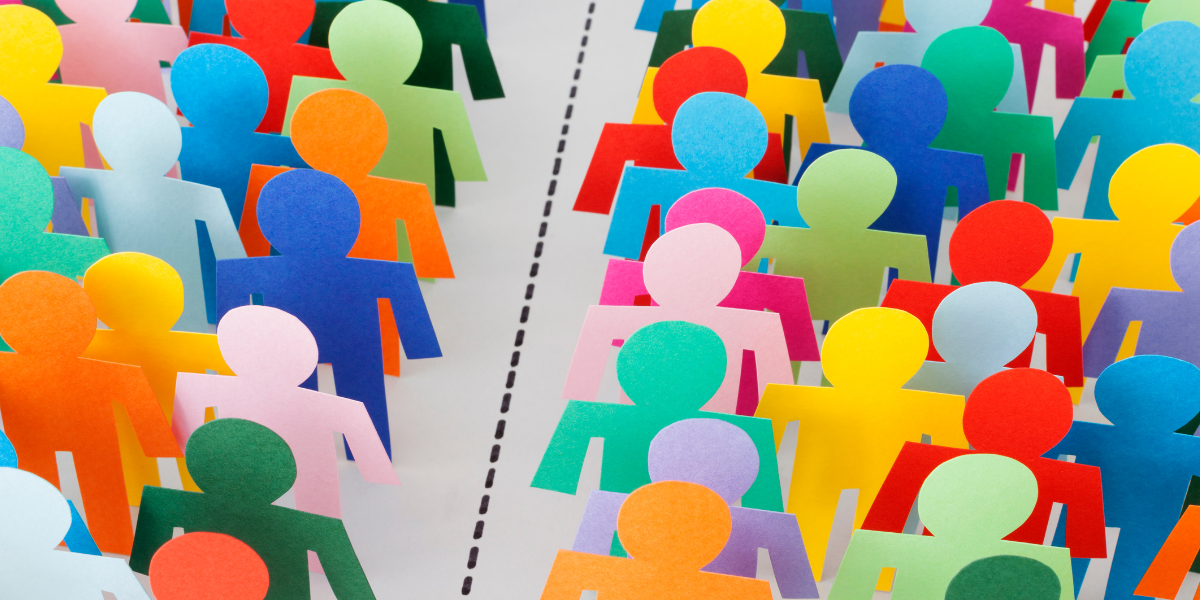La Desinformación mata la Democracia: Verifica antes de Compartir | Disinformation kills Democracy: Check before you Share
Con el apoyo de la Fundación Kofi Annan, Sebastián Pedraza, uno de los Kofi Annan Changemakers 2021, y otras organizaciones asociadas han lanzado una campaña para que los jóvenes de Colombia luchen contra la desinformación durante las elecciones colombianas: “Verifica antes de compartir” o “Check before you share“. (English translation below)
![]()
La campaña tiene como objetivos
- concienciar a los jóvenes colombianos y a sus familias sobre el impacto de las fake news y la desinformación durante el periodo electoral y entender la importancia de verificar la información que comparten
- informar a los jóvenes de que pueden convertirse en agentes positivos en la lucha contra la desinformación siguiendo unos sencillos pasos.
¿Por qué una campaña sobre desinformación y noticias falsas?
La desinformación -la difusión intencionada de información falsa o engañosa- es un problema global que afecta a las democracias de todo el mundo.
La Comisión Kofi Annan sobre Elecciones y Democracia en la Era Digital advirtió que “la desinformación se ha convertido en una amenaza crítica para la integridad electoral”. Cuando los votantes están mal informados, pueden elegir a un candidato que no se ajusta a sus preferencias. La desinformación puede eliminar la responsabilidad de las elecciones. También puede socavar la confianza en unas elecciones libres y justas al sembrar la duda sobre la legitimidad y la exactitud de una elección.
Las noticias falsas tienen un 70% más de posibilidades de ser retuiteadas que la información verdadera
La desinformación no es algo nuevo: pero las redes sociales suelen ser el lugar donde los votantes descubren por primera vez historias falsas o engañosas, y pueden amplificar y difundir estas historias con rapidez y facilidad.
Es difícil distinguir las noticias reales de las falsas y la tecnología lo ha hecho aún más difícil. Y las noticias falsas son peligrosas.
De hecho, sabemos que las noticias falsas tienen un 70% más de probabilidades de ser retuiteadas que la información verdadera. A todos nos atraen los contenidos emotivos, vívidos y convincentes, por lo que la desinformación -diseñada para provocar respuestas fuertes y emocionales- puede generar mucha más participación que otras formas de noticias e información.
Entonces, ¿qué puedo hacer al respecto?
Los jóvenes pueden marcar la diferencia. Tú puedes marcar la diferencia.
La Organización Mundial de la Salud (OMS) creó un sencillo gráfico durante la pandemia de Covid para explicar cómo una persona puede ayudar a prevenir la difusión de noticias falsas. Muestra el tipo de preguntas que se hacen y que ayudan a detener la difusión de información falsa:
![]()
Fuente: https://www.who.int/news-room/spotlight/let-s-flatten-the-infodemic-curve
7 cosas que puedes hacer
- Haz una pausa antes de compartir. No te precipites. Tómate unos minutos. Cuenta hacia atrás desde 10 y vuelve a mirarlo. Esto te ayudará a ver la información de una manera más racional y a juzgar mejor si es correcto compartirla.
- Hazte algunas preguntas sencillas. Pregúntate: ¿He leído todo el artículo? (muchas noticias falsas utilizan titulares impactantes para llamar la atención) ¿Por qué estoy compartiendo esto? ¿Cómo me hace sentir? ¿A quién apoyo al compartirlo?
- Comprueba la fuente: ¿Reconoces el sitio web? Si no es así, averigua si es una fuente creíble o fiable. Busca en la sección “Acerca de” para encontrar más información sobre ella y también busca al autor. Comprueba también si hay otros medios de comunicación acreditados que informen sobre la noticia.
¿No estás seguro de si algo que has visto en Internet es cierto o no? Empieza aquí > Colombia Check
Aunque los siguientes consejos sobre cómo identificar las noticias falsas fueron diseñados por la OMS para luchar contra la desinformación sobre Covid, los consejos pueden aplicarse a cualquier tipo de noticia > Consejos para identificar noticias falsas - Si lo ves, dilo: Si ves que alguien que conoces comparte algo que no te parece correcto, dilo. Detén a tus amigos si crees que están alimentando el ciclo de desinformación (recuerda el gráfico de la OMS) Comparte esta página, comparte los consejos, pídeles que hagan una pausa. Esto no significa que tengas que juzgar, ayúdales a verificar e informarse.
Denuncia las noticias falsas. Si ves que se comparten noticias y sabes o sospechas que se trata de desinformación, puedes alertar a las plataformas de medios sociales. La siguiente página de la OMS te explica cómo hacerlo > - Infórmate antes de votar. Tu voto significa tu elección. ¡No dejes que alguien se meta en tu cabeza!
- Únete a nuestra campaña: Síguenos en Instagram, Twitter y Facebook y utiliza los hashtags: #Pausayverifica #Nohablespaja #Nocomacuento
- Asiste a nuestro webinar para saber más y compartir tu opinión. Al principio del mes de mayo, celebraremos un seminario web con expertos en tecnología y política, así como con jóvenes de Colombia y otros países, para debatir los riesgos que la desinformación supone para las elecciones. Únase a nosotros para descubrir cómo los jóvenes pueden luchar contra la desinformación, especialmente en el contexto de las elecciones. Pronto compartiremos más información en nuestros canales de redes sociales y en este artículo.
With the support of the Kofi Annan Foundation, Sebastián Pedraza, one of the 2021 Kofi Annan Changemakers, and other partner organisations have launched a campaign for young people in Colombia to fight disinformation during the Colombian elections: “Verifica antes de compartir” or “Check before you share.”
![]()
The campaign aims to:
- make young Colombians and their families aware of the impact of fake news and disinformation during the electoral period and understand the importance of verifying the information they share
- inform young people that they can become positive agents in the fight against disinformation by taking a few simple steps.
Why a campaign on disinformation and fake news?
Disinformation – the intentional dissemination of false or misleading information – is a global problem that affects democracies worldwide.
The Kofi Annan Commission on Elections and Democracy in the Digital Age warned that “disinformation has become a critical threat to electoral integrity.” When voters are misinformed, they may choose a candidate who does not actually meet their preferences. Disinformation can remove accountability from elections. It can also undermine trust in free and fair elections by sowing doubt about the legitimacy and accuracy of an election.
Fake news is 70% more likely to be retweeted than true information
Disinformation is not new: but social media is often the place where voters first discover false or misleading stories, and it can amplify and spread these stories rapidly and easily.
It’s hard to tell real from fake news and technology has made it even harder. And fake news is dangerous.
In fact, we know that fake news is 70% more likely to be retweeted than true information. We are all are drawn to content that is emotive, vivid and compelling, so disinformation—which is designed to elicit strong and emotional responses—can generate much more engagement than other forms of news and information.
So, what can I do about it?
Young people can make a difference. YOU can make a difference.
The World Health Organization (WHO) created a simple graphic during the Covid pandemic to explain how one person can help prevent the spread of fake news. It shows the kinds of questions asked that help stop the spread of false information:
![]()
Source: https://www.who.int/news-room/spotlight/let-s-flatten-the-infodemic-curve
7 things you can do
- Pause before you share. Don’t rush! Take a few minutes. Count backwards from 10 and look at it again. This will help you look at the information in a more rational way and be a better judge of if it’s right to share.
- Ask yourself some simple questions. Ask yourself: Have I read the whole article? (many fake news stories use shocking headlines to grab attention) Why am I sharing this? How does it make me feel? Whose agenda am I supporting by sharing it?
- Check the source: Do you recognise the website? If not, find out if it’s a credible/reliable source. Look in the about section to find out more information about it and also search for the author. Also, check if there are other reputable news/media outlets reporting on the story.
Unsure if something you’ve seen online is true or not? Start here > Colombia Check
Although the following tips on how to identify fake news were designed by the WHO to fight disinformation about Covid, the tips can apply to any kind of news > Tips to identify fake news - If you see it, say it: If you see someone you know sharing something you don’t feel is right, say something. Stop your friends if you feel they are feeding the cycle of disinformation (think back to the WHO graphic!) Share this page, share the tips, ask them to pause. This does not mean you have to be judgmental, help them verify and inform themselves.
Report fake news. If you see news being shared and you know or suspect that it is disinformation, you can alert the social media platforms. The following page from the WHO tells you how: > How to report misinformation online - Inform yourself before you vote. Your vote means your choice. Don’t let someone get in your head!
- Join our campaign: Follow us on Instagram, Twitter and Facebook and use the hashtags: #Pausayverifica #Nohablespaja #Nocomacuento
- Attend our webinar* to learn more and share your thoughts. At the beginning of May, we will hold a webinar with tech and political experts, as well as young people from Colombia to discuss the risks posed to elections by disinformation. Join us to discover how young people can fight disinformation, especially in the context of elections. More information will be shared soon on our social media channels and on this article.
*The webinar will be in Spanish.
You can find useful resources here.



